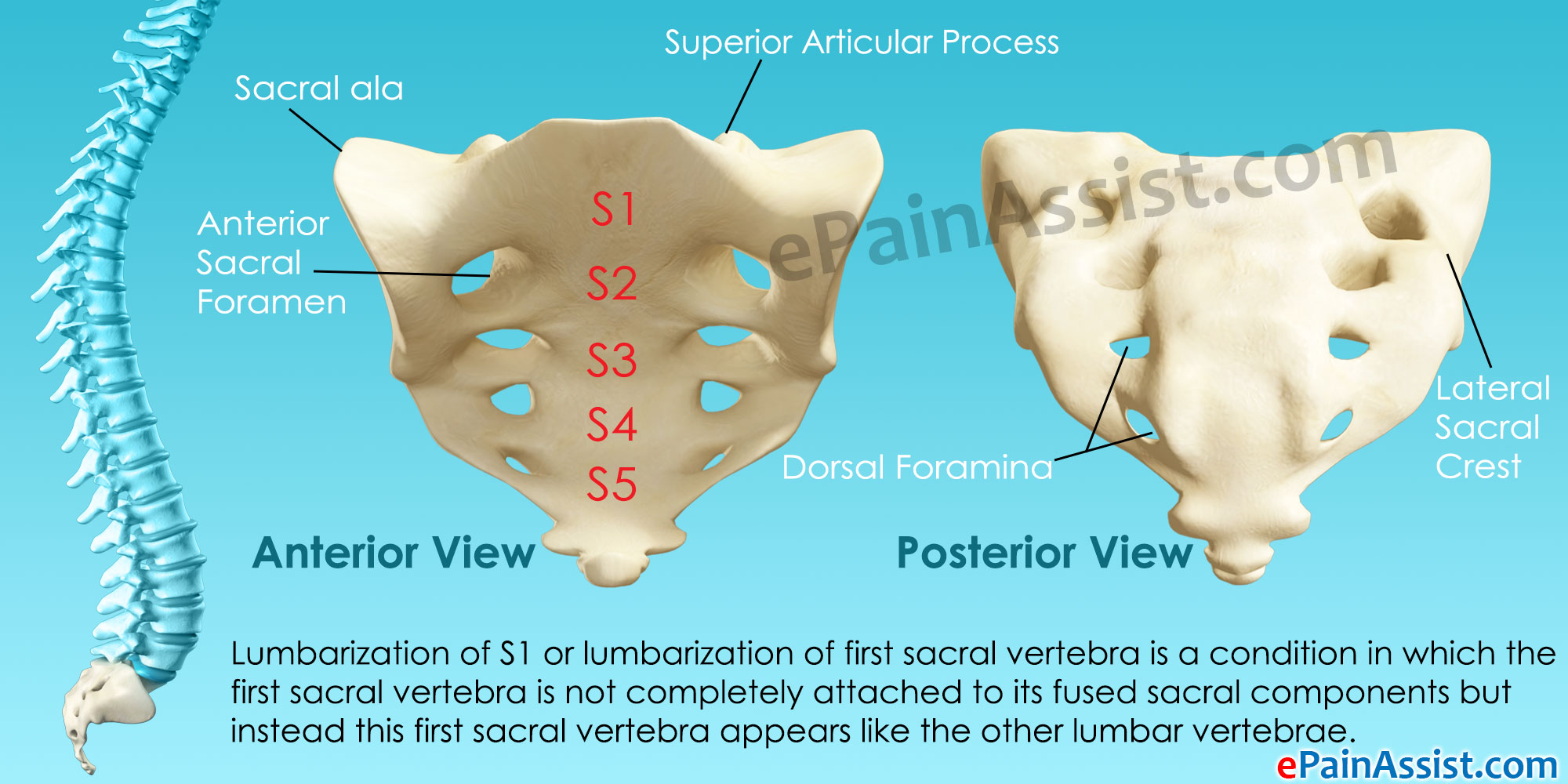What is Lumbarization?
The human spine is composed of vertebrae namely, cervical, thoracic, lumbar, sacral and the coccyx at the lower end. There are 5 lumbar vertebrae and 5 fused sacral vertebrae, which are based in the region of middle and lower back and facilitate movement of that part of the back. The spinal vertebrae and the spinal column are formed during the normal embryonic development.
However, sometimes there may be disturbances during the formation of the spinal column in the womb due to various reasons. This may result into congenital deformities of the spine that can affect individuals with varying degrees of severity. Lumbarization is a congenital anomaly, in which the sacral vertebrae assume the appearance of a lumbar vertebra, like additional lumbar vertebra and less fused sacral vertebra.
What is Lumbarization of S1 or First Sacral Vertebra?
There are five lumbar vertebrae, followed by five sacral vertebrae. Normally, the lumbar vertebrae are arranged one below the other with inter-vertebral discs in between. The five sacral vertebrae are fused to form the sacrum. Both lumbar and sacral vertebrae appear different and perform their respective function. But some people may have a congenital anomaly which presents a 6th lumbar vertebra.
Lumbarization of S1 or lumbarization of first sacral vertebra is a condition in which the first sacral vertebra is not completely attached to its fused sacral components but instead this first sacral vertebra appears like the other lumbar vertebrae. It is also called as an extra vertebra, additional lumbar vertebra or transitional vertebra. It occurs due to non-fusion of first and second sacral segments. This lumbarized S1 vertebra may also have a disc like the other lumbar segments or may have a disc space that remains underdeveloped.
This lumbarized first sacral vertebra appears like another lumbar vertebra, which may give an impression of a 6th lumbar vertebra. This is commonly referred to as an extra vertebra, which may sound different but the fact is that while it appears like an extra moving lumbar vertebra there is one less fused sacral vertebra in the tailbone.
Does The Extra Lumbar Vertebra Affect Health?
The extra vertebra may only appear like lumbar segments and may be free to move unlike its other fused sacral segments, but it may not be able to perform all functions of a normal lumbar vertebra. While an extra lumbar vertebra can be just an incidental finding with no direct relevance to clinical complaints, sometimes, the lumbarized S1 vertebra can lead to problems. While congenital deformities are known to present themselves at birth, some anomalies can only make the deformed part weak and complaints may arise on exposure to certain triggering factors, trauma or aging.
Although, this extra lumbar vertebra is said to be an extra moving lumbar vertebra, it is not that free nor is it fully capable of performing the function of a lumbar segment. Thus this lumbarized S1 vertebra is not completely a fused sacral segment nor does it become a normal lumbar segment. This makes it difficult to accommodate the additional vertebral joint while performing daily tasks and may make this vertebra more vulnerable to injury and joint irritation. With advancing age and activities, the lumbarized first sacral vertebra can find it difficult to cope and may become an area that triggers pain, discomfort or may remain prone to injury.
In some cases complaints like back pain, inflammation, swelling, stiffness of back, difficulty in making certain movements, decreased range of motion and back muscle spasms may be seen. Some may be at an increased risk of injury or inter-vertebral disc problems, especially at the junction of lumbarization. Sometimes, radiculopathy or nerve problems like tingling, burning sensation in the legs can be felt due to sciatic nerve compression in persons experiencing back problems.
What Is The Treatment For Lumbarization?
Lumbarized sacral vertebrae can take different shapes and the anomalous bone may vary in the way it forms a false joint with other vertebra called pseudoarthrosis or affects spinal movement. Hence treatment depends on the nature of the anomaly and the lumbarized sacral bone. Proper diagnosis and study of the lumbarized vertebra is done by using imaging studies.
Treatment For Lumbarization Includes:
- Anti-inflammatory drugs, muscle relaxants for back pain, swelling, inflammation.
- Injections for therapeutic blockade with painkillers or steroids for severe vertebral joint problems.
- Manual therapy or manipulation for the vertebral joint, muscle or radicular technique
- Surgical treatment may be considered for cases requiring correction.
- Physiotherapy for lumbar pain, weakened muscles, sciatic nerve pain, nerve symptoms and spinal traction in certain cases. Use of lumbar belt or corset to reduce pain, inflammation and restricted movement during back pain, to protect back muscles as advised by physician.
- Performing therapeutic exercises for strengthening and stretching of back muscles according to expert advice can help. Back muscles, need to be strengthened and regular physical training can help to keep them supple and strong.
While the direct link of lumbarization and back problems remains unclear, it is worth protecting the back and taking appropriate measures to maintain the muscle strength.
Also Read:

